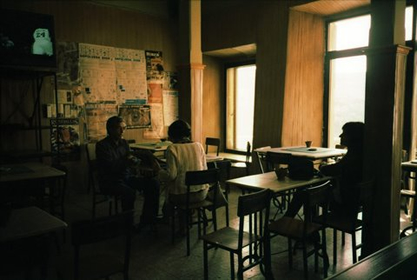
The first question should always be:
Who is using this photograph and what for?
 A lot has been said and written about the effect of the internet on entertainment and art. Especially about music, cinema and to a lesser extent literature. The discussion has been centered on the reproduction of content, which has brought the subject to that of copyrights.
A lot has been said and written about the effect of the internet on entertainment and art. Especially about music, cinema and to a lesser extent literature. The discussion has been centered on the reproduction of content, which has brought the subject to that of copyrights.
The discussion related to photography is located on a different level, on that of meanings, which in sum is that of authority. To understand this statement, we have to point out that we are working on the assumption that the meaning of artistic production and its value is set by a network of authorities, and each activity has its own networks (galleries, museums, publishing houses, agencies, prices, critics, etc.). In other words, in the case of photography, images contribute little to find its meaning. The meaning is induced.
The means of reproduction associated to digitalization have undermined traditional authorities, images are easily found, are often free, ephemeral. There is an increase in easily found images that sometimes don’t impress for more than a few seconds and that are put to disposal through devices that are available to all: cell phones, computers, digital cameras, etc..
It is not easy anymore to exert an institutional control over images when there are so many photographers showing their photos in different media. The existence of these media is the best defense against the monopoly control of the meanings and values of photography. Even when traditional institutions try to maintain their domination and subordination putting economic and social pressure on the needs of the industry of culture.
